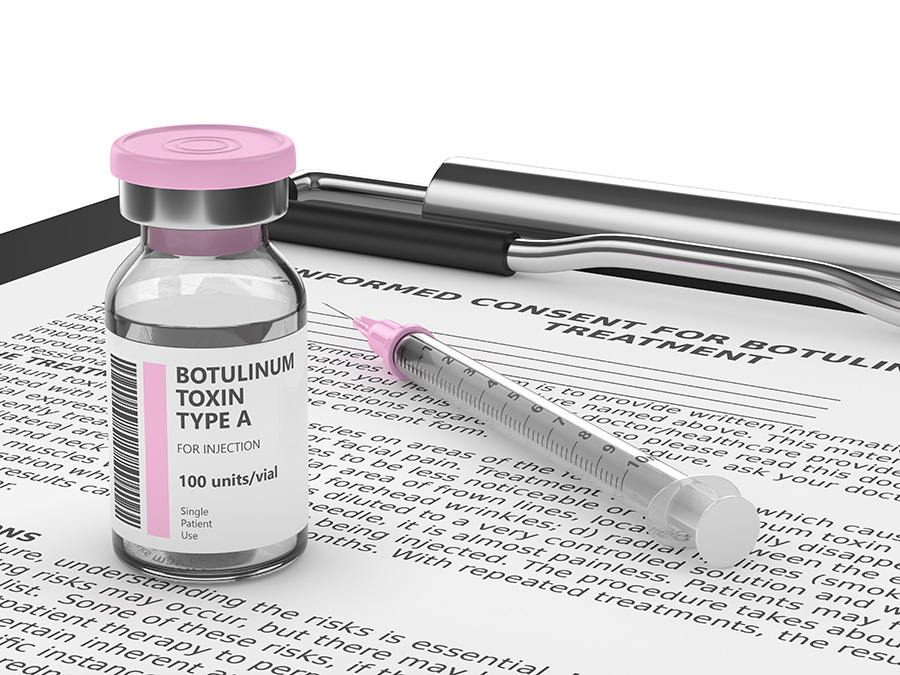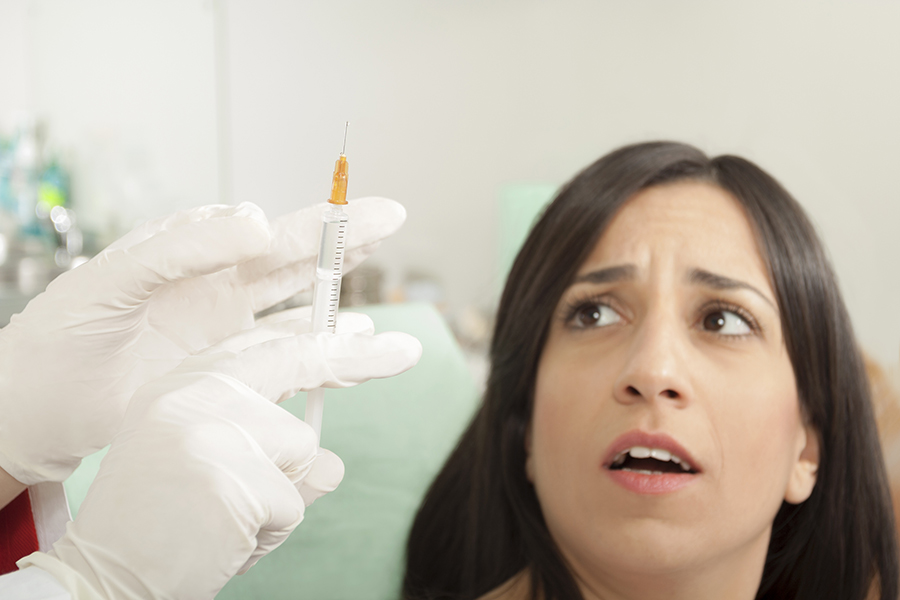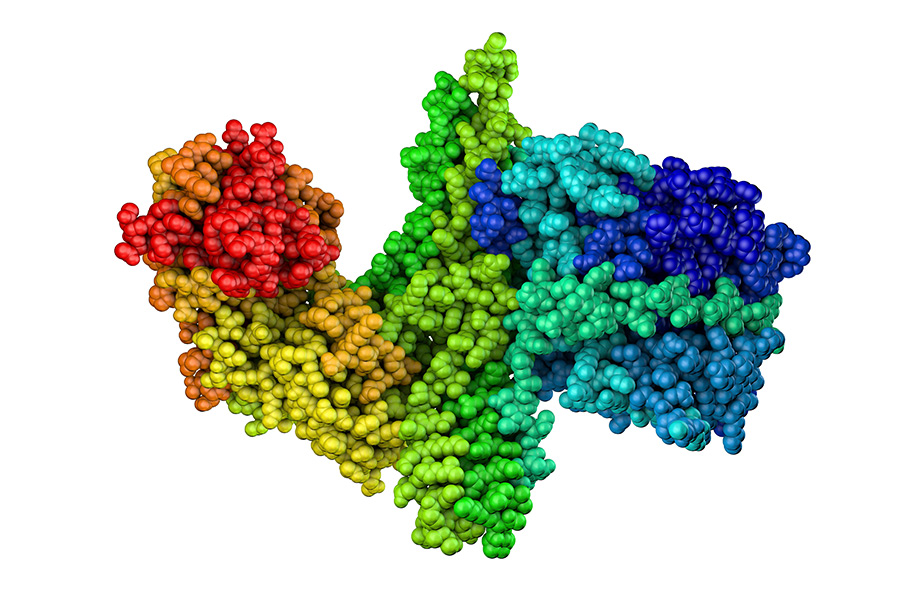Botulinum neurotoxin type A resistance: An emerging problem
Botulinum neurotoxin A (BoNT-A), often referred to as ‘Botox’, is commonly used to treat medical conditions and increasingly in cosmetic procedures. However, long-term use and high doses of BoNT-A may lead to immunoresistance, limiting its future therapeutic benefit. A panel of experts including Dr Mary Dingley, Cosmetic Medicine Centre, Australia, is addressing this emerging issue. Its published recommendations offer a set of guidance for aesthetic practitioners to minimise the risk of immunoresistance. The panel also promotes a culture of open communication with patients about BoNT-A risks, to empower individuals to make a fully informed decision.
The bacterium Clostridium botulinum produces a powerful neurotoxin, botulinum neurotoxin A (BoNT-A). Most of us know this neurotoxin as ‘Botox’. It blocks the nerve signals to the muscle it is injected into and, without a signal, the muscle cannot contract. BoNT-A is used to treat muscle conditions such as dystonia (repeated and prolonged muscle contraction) and spasticity (increased muscle tone and rigidity), among other disorders. Over the last two decades, its injection has become the most common cosmetic procedure around the world, where it was first used to reduce the appearance of facial wrinkles. However, cosmetic use of BoNT-A has now expanded to include off-label indications such as jawline slimming and body contouring that require significantly higher doses. Intradermal injections of BoNT-A for skin quality improvement are also increasingly popular, adding to the doses used in aesthetics. The effect of the injection is temporary, so repeated injections are required to maintain the desired outcome.
Emerging evidence shows that repeated injections and higher doses of BoNT-A may provoke the immune system to produce neutralising antibodies (NAbs). A consequence of these antibodies is a reduced or non-existent response to subsequent treatments, resulting in little or no therapeutic benefit. This diminished effect is referred to as a secondary nonresponse (SNR) and can weaken or even prevent future therapeutic benefit in an individual. In a key publication, a panel of experts including Dr Mary Dingley of the Cosmetic Medicine Centre, Australia, assesses the prevalence of this phenomenon in aesthetics. The panel strongly recommends that patients should be fully informed of the risks of NAb-related SNR. It highlights the importance of acknowledging BoNT-A immunoresistance as a potential complication that may affect future therapeutic use and discusses best practices incorporating clinical, ethical, and biological factors in treatment decision-making to help mitigate the risk of immunoresistance to BoNT-A.

Danger, danger! Eliciting an immune response
Several BoNT-A formulations exist and the most widely used are onabotulinumtoxinA (ONA), abobotulinumtoxinA (ABO), and incobotulinumtoxinA (INCO). The first two of these formulations consist of a core neurotoxin and neurotoxin-associated proteins (NAPs). INCO consists of the core neurotoxin with no NAPs. It is the core neurotoxin and not the NAPs that bestows therapeutic benefit.
In aesthetics, there is a common misconception that neutralising antibody-related secondary nonresponse is not an issue due to the lower doses used.Upon injection, the NAPs alert the recipient’s immune system to the ‘foreign invader’, and an immune response is triggered. Special immune cells called dendritic cells recognise NAPs as ‘dangerous’ and boost immunity by offering up these ‘foreign invaders’ to the T-helper cells of the immune system. These T-helper cells recognise the ‘foreign invader’ and stimulate production of antibodies by the B-cells. The core neurotoxin, by itself, lacks the ‘danger signals’ required to activate dendritic cells. However, when the core neurotoxin is injected together with NAPs at the same location, there is a risk of core neurotoxin being ‘accidentally’ internalised and presented by activated dendritic cells to T-helper cells, which may lead to the production of neutralising antibodies against the core neurotoxin. This immune response can occur during either therapeutic or aesthetic use of BoNT-A and may be influenced by the following factors: purity of the formulation; an individual’s age when treatments started (which affects the duration of treatment); and the dose and frequency of injections. Dingley recommends that practitioners should carefully consider these aspects in treatment plans and calls for a risk-based approach similar to that suggested for other biologic medications by the US Food and Drug Administration and European Medicines Agency on mitigating adverse immune-related responses associated with therapeutic protein products, as it is equally applicable for BoNT-A use in aesthetic procedures.

Prevalence and consequence of secondary nonresponse
The rate of NAb-associated SNR from therapeutic use of BoNT-A published in systematic reviews and meta-analyses (SRMAs) is currently estimated at 0.3–27.6%. In aesthetics, there is a common misconception that NAb-related SNR is not an issue due to the lower doses used.
However, this ignores the cumulative exposure to BoNT-A over an individual’s lifetime, especially with more patients receiving treatments from a younger age, as well as the increasing popularity of off-label indications employing higher doses. Now, a situation exists in aesthetics where the total dosage of BoNT-A used is not that different from the doses used in therapeutics, making the risks and consequences of immunogenicity very real. As the real-world extent of NAb-related SNR in aesthetics remains unclear, the panel set out to review available literature on rates of NAb formation and SNR development in aesthetic use of BoNT-A. Systematic reviews and meta-analyses assessing different BoNT-A formulations reported 0.2–0.4% prevalence of NAbs in aesthetics. However, there was a strong consensus that these values are underestimated as they were based on studies that were not designed to detect NAb formation and were only studying relatively low-dose on-label indications rather than the higher-dose off-label indications, which constitute a large proportion of the real-world BoNT-A use. The studies also had a relatively short follow-up time of 4 to 16 months whereas NAb formation usually occurs over several years. When case reports and studies were analysed, Dingley and colleagues identified 13 cases of NAb-related SNR which would have been excluded from SRMAs.
Across these 13 cases, the panel found patterns of SNR development following regularly repeated treatments over 2 to 72 months with all having received ABO or ONA formulations at some point in time. Notably, there were no reports of NAb formation and SNR in individuals treated only with INCO formulation in aesthetics, a finding mirrored in therapeutic patients. INCO contains only the core neurotoxin needed for therapeutic benefit and no NAPs, therefore there is minimal risk of an immune response being launched. This highlights the importance of purity and choice of formulation.

Despite these apparent lower rates of SNR in aesthetics, the panel warns of the adverse consequences of immunoresistance to BoNT-A treatment. For example, a situation may exist where an individual has undergone extensive aesthetic treatments earlier in life and subsequently develops SNR, but then later presents with a medical condition that requires BoNT-A therapy. Therapeutic treatments may then not be as effective or completely ineffective. Such a situation would be detrimental for the patient, with significant impact on quality of life. There might also be medicolegal implications for the practitioner, especially if the risks of SNR had not been discussed with the individual before treatments commenced. Higher doses and less time between injections to maintain the desired therapeutic effects can signal development of SNR and practitioners are encouraged to recognise these warning signs, test for them, and manage them appropriately.
Through raising awareness, we can inform, educate, and adopt best practices to reduce the risk of BoNT-A immunoresistance.Consensus and recommendations
There is consensus that despite lower published SNR rates in aesthetics, the true prevalence is most likely higher and will increase with increased aesthetic use of BoNT-A. Development of SNR is a genuine concern that must be addressed. Raising awareness of this issue and its detrimental effects on future therapeutic benefits is needed in the world of aesthetics. The experts emphasise the importance of comprehensive clinical assessments but acknowledge the challenge of determining treatment history in aesthetics where patients attending various clinics and receiving different formulations are commonplace. After obtaining a thorough clinical history, treatment plans should aim to minimise immunoresistance as much as possible. The experts discuss what they call modifiable risk factors, with choice of formulation being an important consideration for reducing the risk of NAb formation. They recommend when safety and efficacy of formulations are similar, practitioners should consider a highly purified option to lessen the possibility of SNR. Additionally, administering the lowest effective dose at suitable intervals can also help to reduce the risk of immunoresistance and is suggested best practice.

Inform, educate, and adopt best practices
To tackle the growing issue of SNR, Dingley and colleagues advise that a patient-centred approach fostering an environment of open discussion and collaboration with patients is needed, followed by appropriately tailored treatment plans. The researchers emphasise the importance of better understanding the patients who are seeking treatment and their reasons for doing so, and of ensuring that they understand and are aware of risks and treatment choices. For aesthetic BoNT-A use, this refers to the risk of immunogenicity and choice of formulations available, respectively. It is essential that core medical ethics principles, such as informed consent and patient autonomy, are also applied in aesthetics.
The task is to bring this crucial issue to the attention of individuals undergoing BoNT-A treatments, the regulators, practitioners, as well as the wider public. Through raising awareness, we can inform, educate, and adopt best practices to reduce the risk of BoNT-A immunoresistance.
Personal Response
How can practitioners and the medical community best implement the recommendations and best practice for BoNT-A treatment?As medical practitioners, we strive to ‘first do no harm’ and while it may be argued that stimulating immunoresistance is not doing ‘harm’, it may certainly remove ‘help’. It therefore behoves us to use formulations and practise in ways which are least likely to stimulate antibody resistance, such as using the lowest effective dosage and, wherever possible, avoiding repeating treatments too soon.
What do you think are the most effective ways to raise awareness of BoNT-A secondary nonresponse in the public?
As practitioners, we can speak directly to our patients, who trust us to have their best interests at heart. Publicly accessible articles can spread the word and regulatory authorities can encourage manufacturers to strive to formulate more purified medications and practitioners to use these more purified formulations which are less likely to cause later resistance problems.